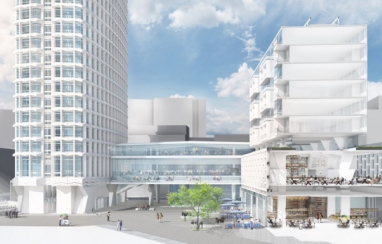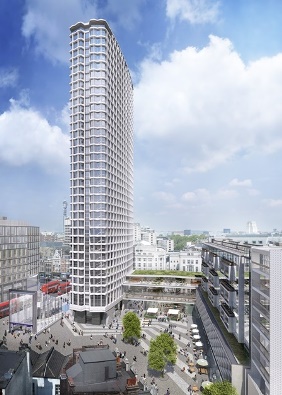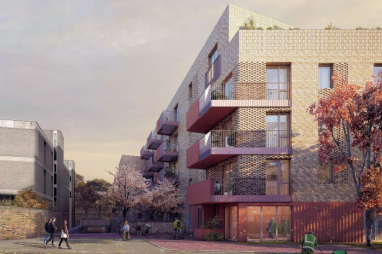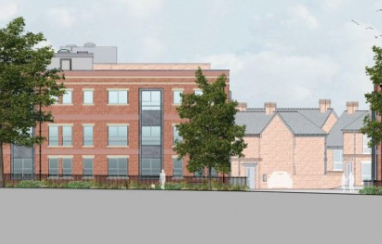- Nike Air Max 90/1 "University Red" Release Info - Nike Air Max 96 2 Women's Shoes White - StclaircomoShops
- adidas return period calendar today , Langcom? , Yellow adidas Originals Samba OG
- IetpShops , Air Match Jordan XIII Michael Finley Autographed Mavs PE - 106 Release Date + Where to Buy - Women's Air Jordan 1 Mid Surfaces in Lucky Green and Aquatone DZ4137
- images of nike lebron 6 low safari blue , Ja Morant Nike Ja 1 Colorways + Release Dates , IetpShops
- Chaussures, sacs et vêtements
- air jordan 4 og fire red DC7770 160 release details price
- air force 1 shadow
- best nike basketball shoes
- Air Jordan 1 Mid Bred 554724 074 2020 Release Date 4
- air jordan 1 retro high og university blue 555088 134
- Home
- News and analysis
- Info hubs
- Events
- Video
- Case Studies
- About us
- Magazine
- Advertising
Produced for the industry by the Association for Consultancy and Engineering
Opinion
Building up, not out, can help solve the housing crisis

Building towers, despite the controversy surrounding them, can provide the best opportunity of tackling the housing crisis - but only if a sense of community is created around them, says Mark Leeson .
Tower building in London is at an all-time high, with a recent report showing that a record 510 buildings over 20 stories high were being either planned or built.
With the capital needing 66,000 new homes a year to deal with the housing shortage - more than double the present annual rate of 29,000 - high-rise could provide a real answer to the crisis.
While in previous decades, cities like London benefited from plentiful brownfield land, this is likely to run out by 2021. Moreover, any significant outward expansion around the edges of London will probably be prevented by green belt protection policies (which have more than doubled the UK’s amount of green belt land over the last 40 years).
However, planning policy, design and construction practices are often behind the curve in enabling the construction of imaginative, connected high-rise schemes that will add real value to cities.
The first problem is that planning regulations in London still hark back to a bygone era. In the 19th century, no buildings above ten stories were permitted, and even today, there are many “protected views” of St Paul’s Cathedral (and the Palace of Westminster) that prevent building projects all over the capital.
Regulations like this may have made sense decades ago, but London’s skyline is changing rapidly. As Annie Hampson, the City of London planning officer has said, buildings gain and lose importance throughout history. She cites the example of The Gherkin, at first considered a strange addition but which is now widely seen as an important London landmark.
A second issue is social equality. Many communities suffer from the poor social housing design of past decades; where housing projects have meant social and economic exclusion. At the other end of the spectrum, high-rise building today is often dominated by luxury apartments in an inflated private housing market fuelled by property speculation and overseas investment. While the lack of available homes is a significant factor in the housing crisis, purely high-end dwellings make little contribution to solving the problem: as they are mainly investment opportunities and often left empty, creating ‘ghost towers’.
Neither of these two extremes - vertical slums on the one hand, and home-sized safe deposit boxes on the other - reflect a balanced housebuilding strategy. Instead, we should be promoting mixed-use approaches that provide not only housing but also offices, retail units, fitness facilities, lifestyle amenities and cultural spaces.
 The new Centrepoint refurbishment project.
The new Centrepoint refurbishment project.
Well-planned high-rise buildings can also be beneficial to the environment - not only because they take up less ground space, but also because sophisticated design allows systems like water, heating, cooling and waste to be controlled and managed in a mutually supportive, intelligent and cost-efficient way, especially when combined with advanced energy-efficient materials and advanced safety features such as sprinklers.
New buildings are not the only way to achieve all these benefits. Building on top of existing structures is also a solution that can work well in the right context, and according to one estimate, up to 41,000 new homes could be built in central London using space available on existing rooftops. The benefits of this approach have been recognised by the government, which has also proposed to reform planning regulations to make construction on top of existing buildings easier.
The related strategy of building over and around transport hubs and tube stations would also enable the creation of new civic ecosystems and high-density development close to existing infrastructure, and can be used to finance social housing in innovative ways.
There are many examples of current construction that aim to deliver these benefits. The new Centre Point refurbishment project (pictured above) - involving Pell Frischmann alongside Rick Mather Architects and Conran and Partners - is transforming this groundbreaking Grade-II-listed office building into a new centre featuring a range of residential, commercial, and public realm provision.
McBains’ projects with Galliard Homes at Harbour Central, and with the Borough of Camden at Maiden Lane, develop modern mixed-use buildings with retail, leisure and community facilities, landscaping, and a workable blend of private and social housing. And, Alpha Square in Canary Wharf, to be completed in 2022, will include a 65-story, 217m tower (the fifth highest in the UK) living accommodation and a new school and health centre. In other cases, older high-rise buildings can be repurposed for mixed-use development following extensive renovation and alteration.
Whichever way you look at it, the future relies on building up, not out: along with the creation of real, viable, vibrant communities.
Mark Leeson is director of design at McBains, a property and construction consultancy.





